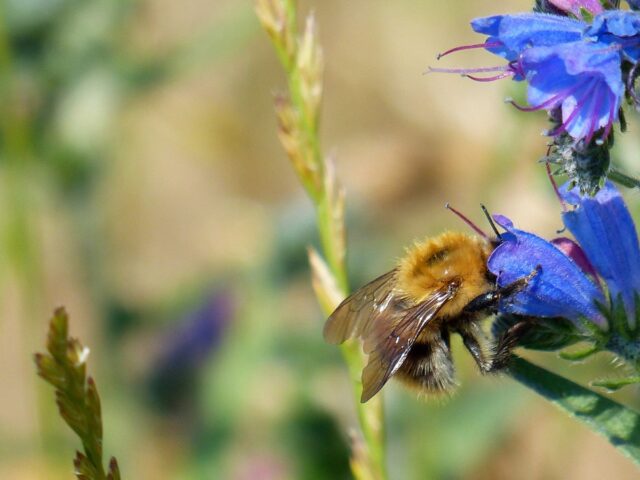Thursday 20 May is World Bee Day and according to the British Trust for Ornithology (BTO), who monitor seven species of bee as part of their weekly Garden BirdWatch survey, bees are being seen in much lower numbers this spring compared to this time last year.
The early part of this spring has been dominated by cold northerly winds and lower than average temperatures and this has meant we are seeing smaller numbers of bees visiting our gardens. Of the seven core species that the BTO monitors, all are being seen at lower levels than would be expected for the time of the year.
The seven core species that are monitored are the Buff-tailed Bumblebee, Common Carder Bee, Early Bumblebee, Garden Bumblebee, Red-tailed Bumblebee, Tree Bumblebee and White-tailed Bumblebee.
Rob Jaques, BTO Garden BirdWatch Support Officer, said, “It might seem strange that a bird organisation is monitoring bees but our 20,000 supporters have been watching and reporting back on the wildlife in their gardens on a weekly basis throughout the year since the survey began in 1995, giving us the chance to keep an eye on the health of a whole host of species that include birds, mammals, amphibians and reptiles, dragonflies and bees.”
He added, “It is hardly a surprise that our bumblebees aren’t being seen as often this spring but it will be interesting to see if they recover to their normal levels as the spring and summer progress. To know whether this is the case or not, we need people to tell us about the bees in their gardens by taking part in BTO Garden BirdWatch.”
We can help bumblebees in our gardens by growing pollinating plants to provide them food. Native species such as Knapweed, Bird’s-Foot-Trefoil and Foxgloves alongside herbs like Rosemary and Sage are all excellent choices for a bee friendly garden. Some of our traditional garden varieties, such as pansies and busy-lizzies, might provide colour but have had their ability to provide pollen bred out. Leaving plants like dandelions to flower is also great for our garden pollinators.
Bumblebees can be difficult to identify with many different species looking similar, with queen, male and worker bees further confusing matters. However, some species are quite distinctive and our guide can help these.
https://www.bto.org/sites/default/files/u23/downloads/pdfs/bbees-645kb.pdf
The most commonly encountered Bumblebee in our gardens is the Buff-tailed Bumblebee. This species emerges earlier than most, and the large queens can be seen foraging for food even on warm winter days. Our garden plants which flower in winter, such as crocuses, are great for these winter wanderers.
Garden BirdWatch is free to take part in – for more information, please visit www.bto.org/gbw




